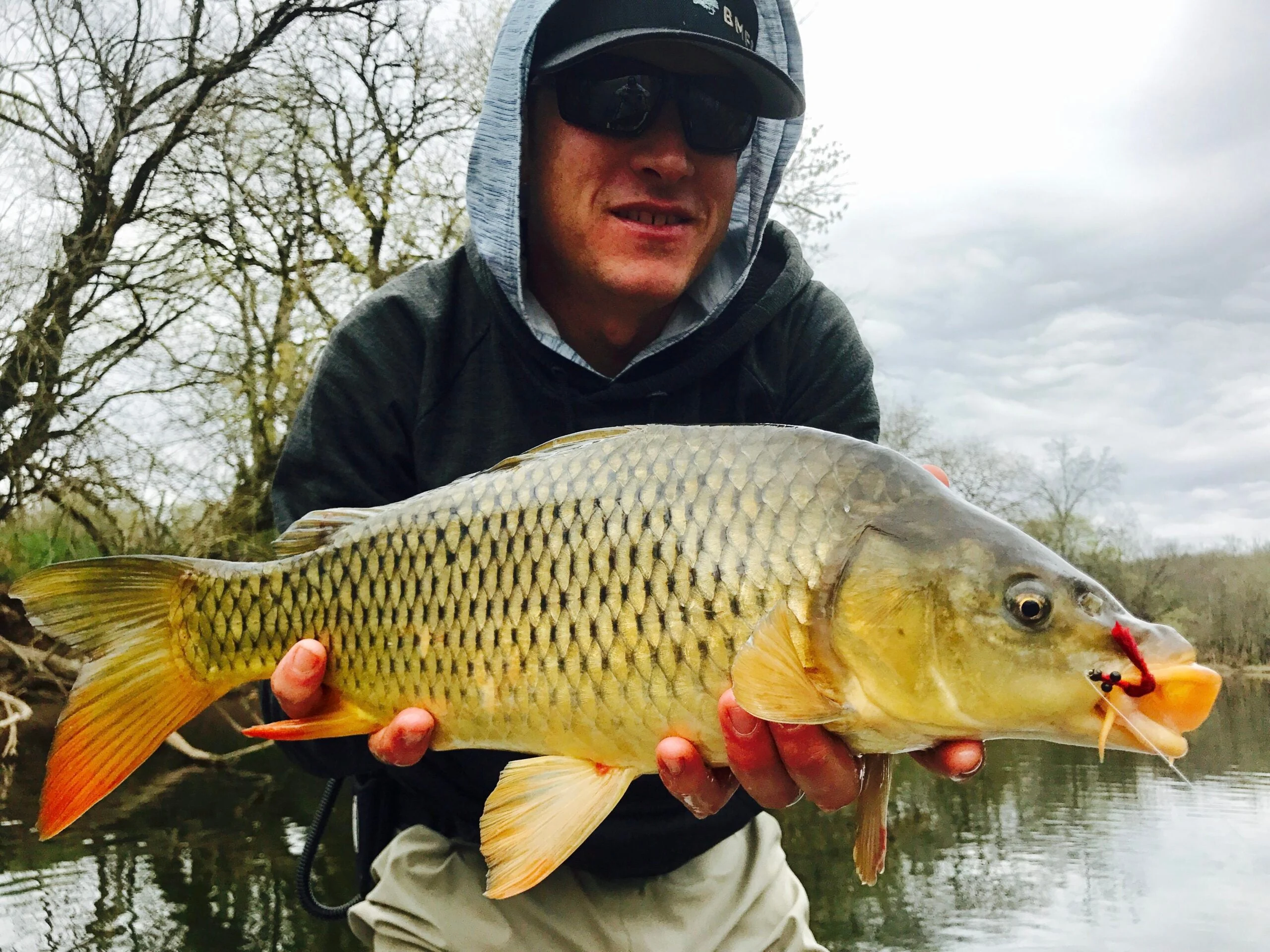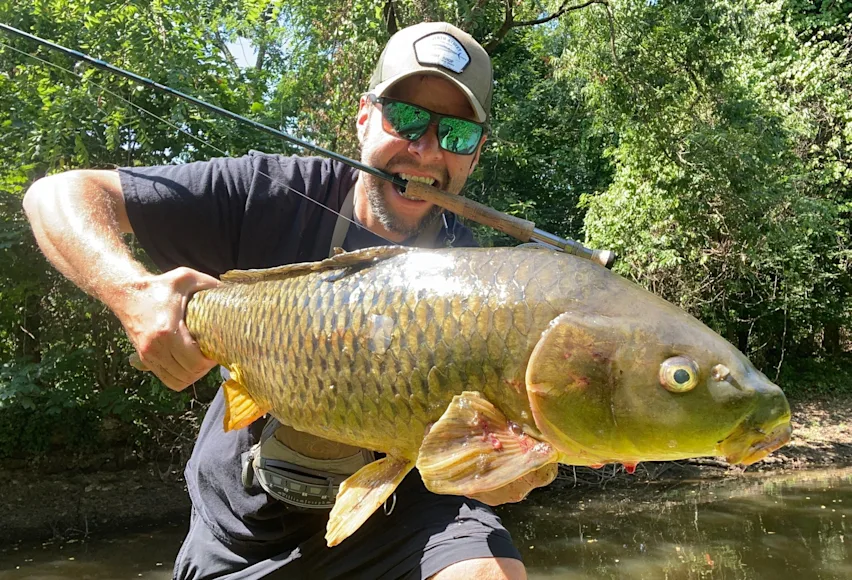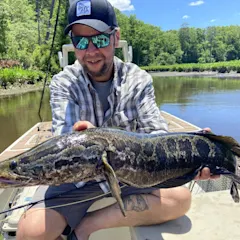Want to know what carp eat? Believe it or not, carp have one of the most diverse palates of all freshwater fishing swimming in the United States. They’re herbivores, and while they dine on a massive variety of foods, one of them—despite popular and cynical belief—is not mud. It’s true that common carp spend most of their time combing the bottom of rivers and lakes for their meals, and that they have a reputation as poor table fare because of their muddy flavor, but they don’t get it from chowing down on silt and muck directly. They are, however, quiet adept at rooting through ooey-gooey lake beds to find specific morsels. They’re also very good at hunting down and eating forage found nowhere near the bottom.
Though you might not be eager to drop a carp fillet in the deep fryer, you should be excited about learning how to catch carp
, because pound for pound, their fight will put many more popular targets to shame. To help you get tied into old rubberlips, faster, here’s a breakdown of some of the foods that answer the question, what do carp eat—and how you can match them on your hook.

If you plan to fly-fish for carp, keep some worm patterns in your fly box. Joe Cermele
Table of Contents: What Do Carp Eat
Aquatic Insects
Marine Worms
Crayfish
Mollusks
Berries and Seeds
Bread
Aquatic Insects
Much like trout, a large portion of what carp eat consists of aquatic insects like stoneflies, caddisflies, and mayflies in their larval stages. Prior to hatching on the lake or river bed, emerging to the surface, and flying away, they cling to and live among the rocks and mud on the bottom. The sensitive mouths and keen noses of carp can feel and smell these morsels even under a few inches of mud, so when you see a carp in the shallows with it’s head down kicking up a cloud of dirt, it’s usually rooting for aquatic insects. While it can be tricky to match this food source in bait form, fly fishermen have an upper hand, as patterns like Hare’s Ears and Prince Nymphs—two of the best fly patterns
ever—do an excellent job mimicking they bugs carp routinely crave.
Marine Worms
Also hiding in the mud and rocks are a variety of small marine worms and other invertebrates, all of which example of food carp eat. Although land-based garden worms are not found in the carp’s natural environment, their love of squiggly, slimy foods explains why these bait shop staples will get vacuumed up by a rooting carp. Likewise, a well-placed pattern like a Sili Worm
are top producers if you’re interested in fly fishing for carp
.
Crayfish
On the topic of what do carp eat, people tend to think of them as lazy feeders. Quiet often that’s true. However, they can also be shockingly aggressive hunters, particularly when they’re in the mood for crayfish. In river systems especially, it’s not uncommon to observe carp digging around the rocks trying to expose these crustaceans, which they’ll then chase down and suck up. So potent is the smell of a fresh crayfish that if you can secure a bucketful, the sweet aroma of a fresh crayfish tail pinned on a hook can lead to bites quickly. If you’re up for more of a challenge and enjoy sight fishing, a small soft-plastic crayfish
hopped in front of a rooting carp can also score.
**Read Next: How to Catch Crayfish
**
Mollusks
Carp eat snails that cling to aquatic plants and sucking up small mussels and clams. The problem, however, is that these can be tough foods to get on your hook. Though you could harvest these baits assuming it’s legal to do so in your state, a better option might be hitting the grocery store. One nice thing about carp is that they tend to be less particular about exact matches and more focused on the entire category of food. In other words, a carp eating freshwater mussels is not likely to snub a saltwater mussel or clam bought at the seafood counter as it’s usually similar enough in smell, taste, and texture to make the play.
Berries and Seeds
If you think carp are lazy and dumb, find a mulberry tree with branches overhanging a lake or river and you’ll quickly have one answer to the question: What do carp eat. In the late spring and early summer when the berries ripen, carp home in on the distinct plop they make when a breeze shakes the fruit loose. Carp from all over the body of water gather under mulberry trees, often swarming to sip the juicy treats right off the surface. For fly anglers armed with a mulberry pattern
, this can be extremely exciting fishing. However, you can also stick a real mulberry on a hook and float it down to the waiting mouths. These surface-feeding events can also happen when certain seed pods and other berries end up blown into the water. The magnetism of sweet-smelling, bite-sized berries also explains why simple corn kernels are such potent baits for carp. Artificial carp dough baits
also routinely come in fruity flavors.
Bread
To be clear, just because carp eat bread does not mean it’s a natural forage for carp. It doesn’t exist in the wild, but make no mistake, these fish absolutely love it. This is especially the case when you find carp in high-traffic areas, such as park ponds and lakes ringed by trails and benches. Carp are very adaptive and learn quickly in these environments to be opportunistic. The sweet, yeasty smell of bread—which they likely first tasted thanks to someone feeding ducks or geese—can be downright intoxicating. Assuming you’re not competing with said waterfowl, a few slices of white bread tossed out as chum can draw carp in fast. Mold a small piece of the bread around your hook, then flatten it out so it’ll float, and cast around your chum pieces. It’s a little dirty, but it’s also a lot of fun.
Continue Reading…
Hungry for more stories about the diets of other fish and game species? Then check out the following on our site:






